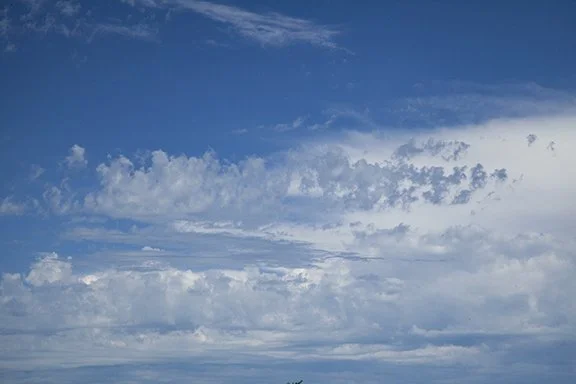Upward Motion on Display
/Photo at Cedar Falls, Iowa, Copyrighted 2022, BY Craig Johnson, Weather Briefing, LC.
For clouds to form there must be upward motion. If the motion is weak, say, a few inches per second, we will see layered clouds. Layered clouds are flat and without could not be described as being spectacular. Strong upward motion creates robust puffy clouds called cumulus. Cumulus come in many different sizes and shapes based on the strength of the updrafts.
The photo above reveals different varieties of cumulus clouds - all in the same photo! Closest to the camera are altocumulus floccus clouds. They are in the middle of the photo and look like tufts of wool. Further away across the lower part of the photo are thicker solid-looking cumulus mediocris and cumulus congestus formed from updrafts of 10 to 20 mph. Finally in the distance and visible behind all of the clouds in the upper right is the top of a cumulonimbus, the granddaddy of all clouds. Cumulonimbus are thunderstorms with updrafts from 20 to more than 60 mph. The top of the cloud is the thunderstorm anvil which can be from 30,000 to 60,000 above the Earth’s surface.
There is another cloud-type visible. Near the center/center-left of the photo is a layered cloud - altostratus. The thin layer indicates a weak layer of upward motion and moisture that is visible as a middle level cloud with weak upward vertical moton.


